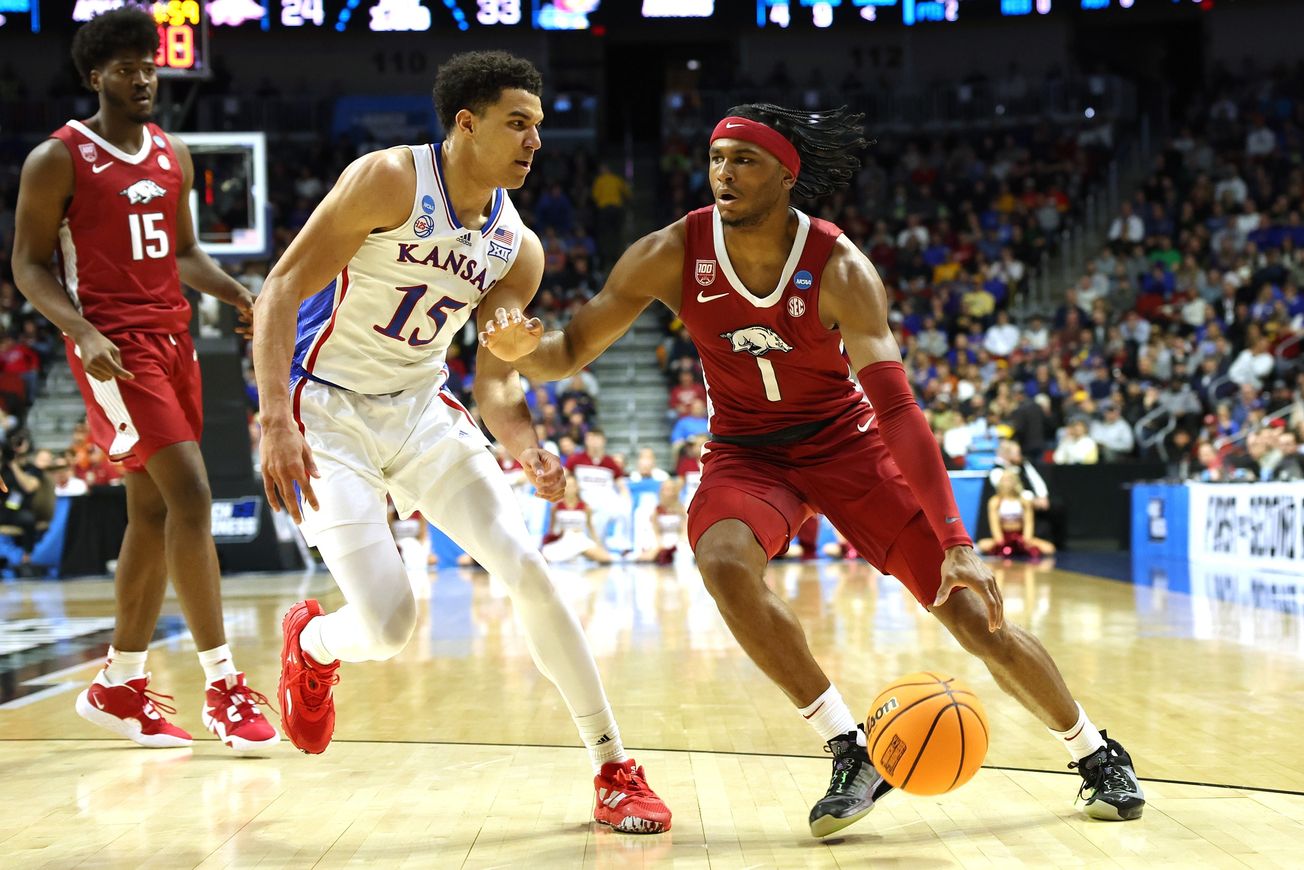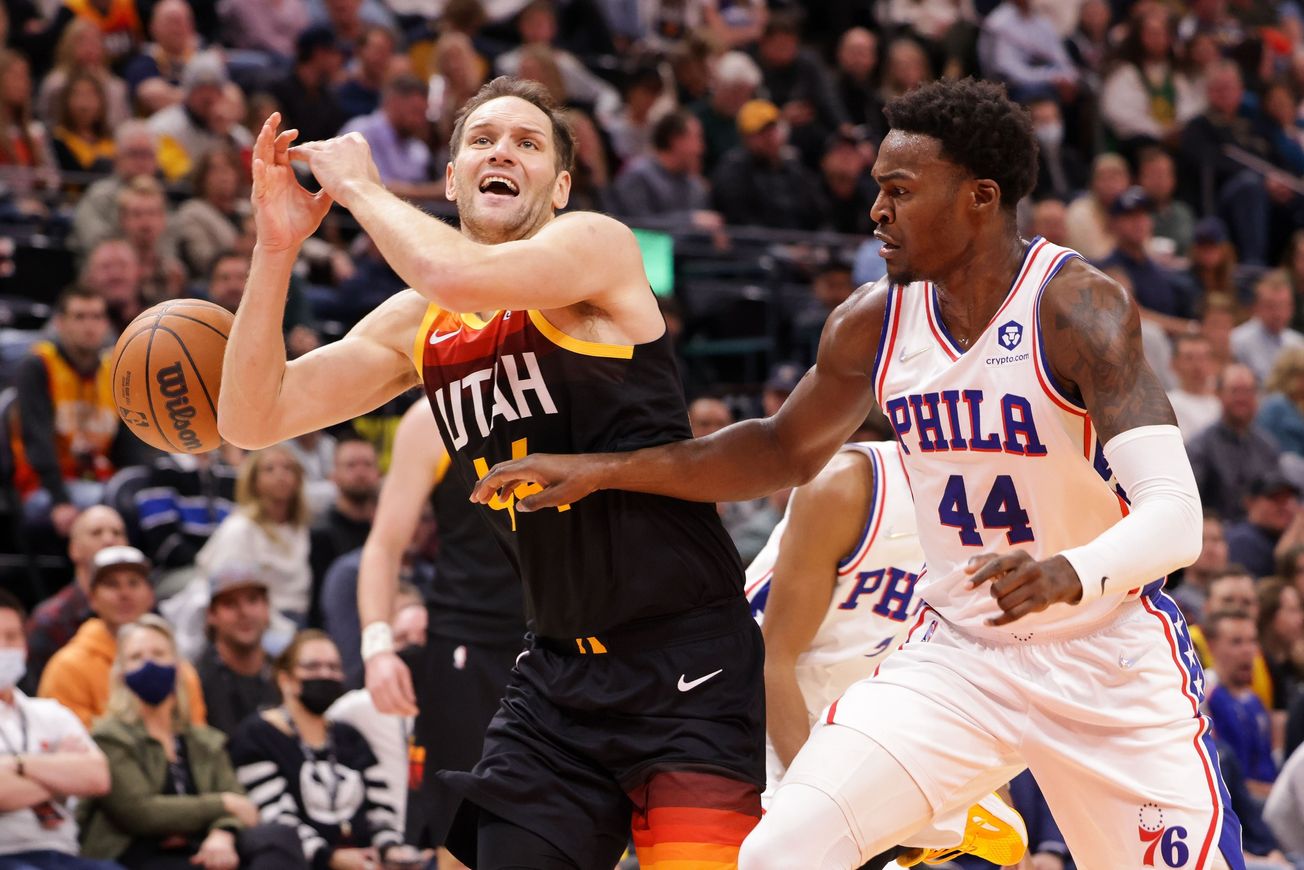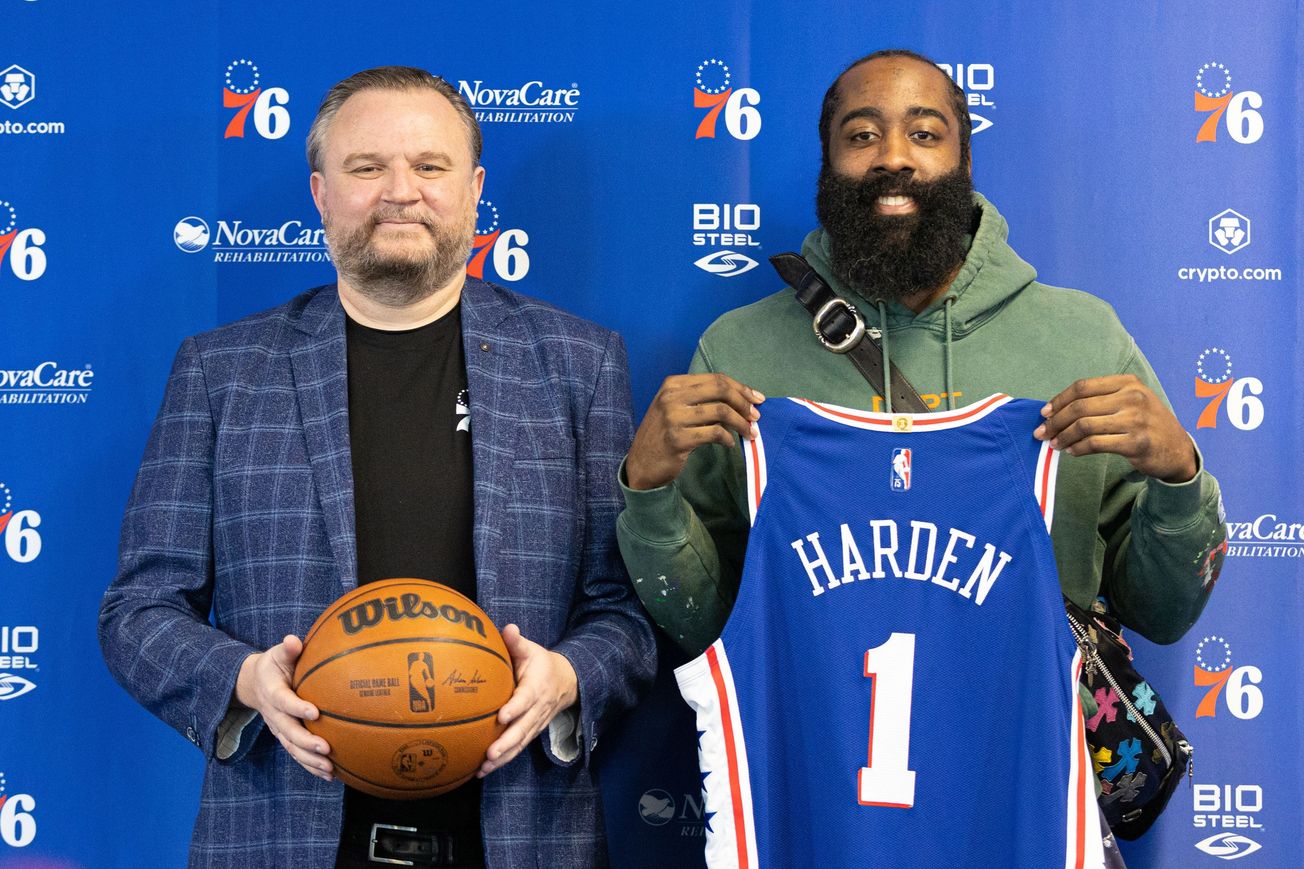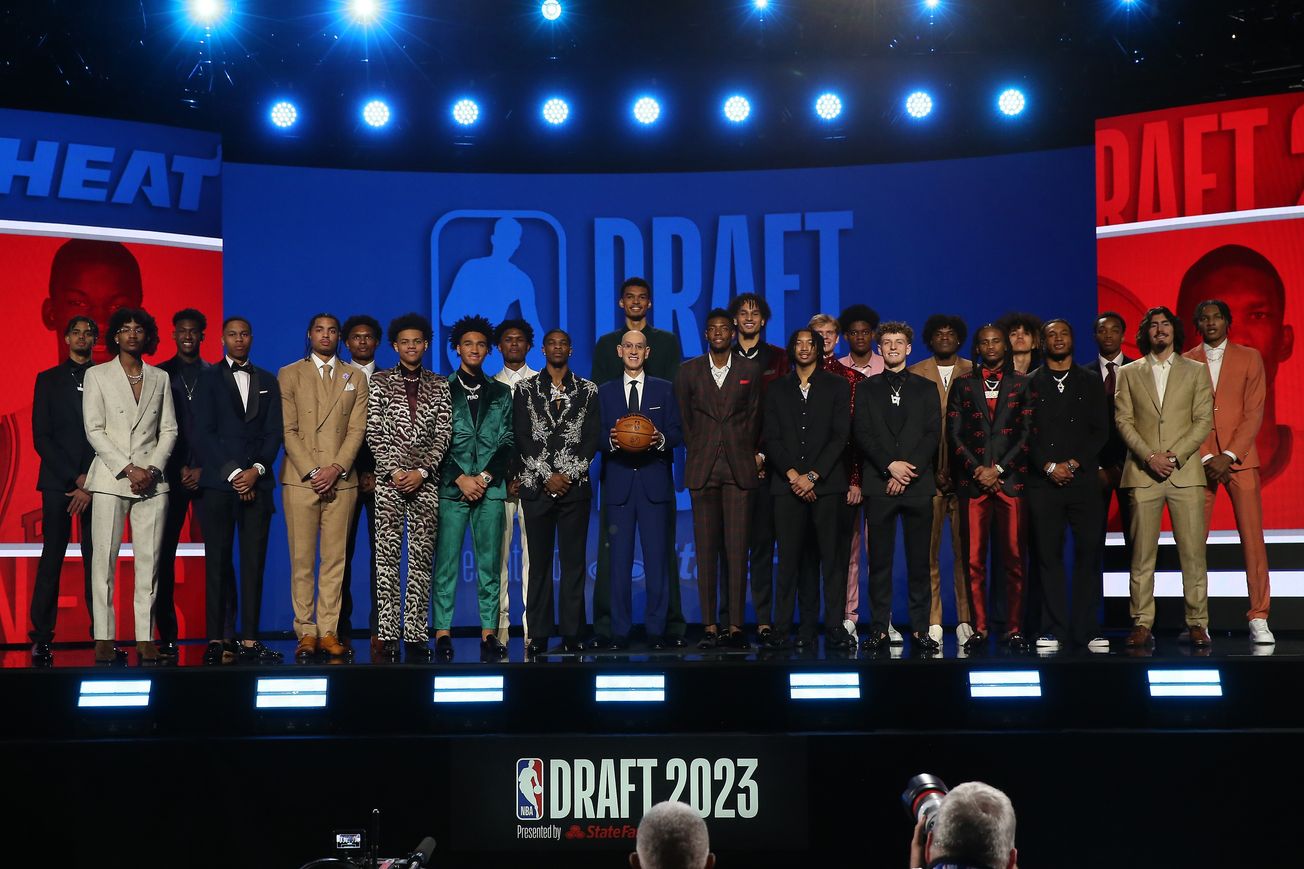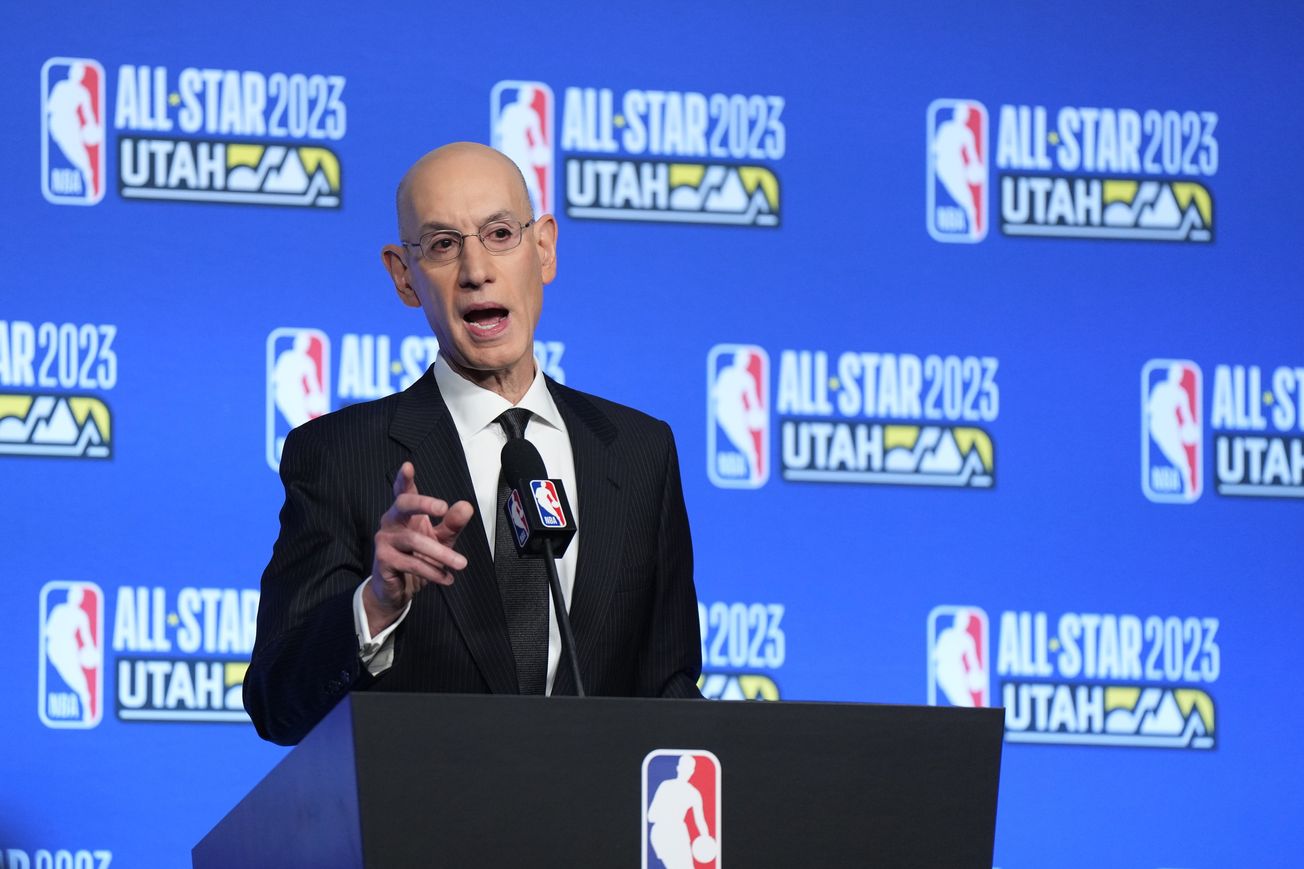The Sixers didn't make a selection in Thursday night's NBA draft, which led me to send out the mildly snarky blank email "recap" of their selections.
But they did sign four undrafted players, including one in Ricky Council IV who many thought had a pretty good chance to hear his name called on draft night. So before we dive into slop season with the start of free agency later this week let's take a quick look at the four players the Sixers added to their program after the draft.
This is the part where I remind you that covering the draft isn't an all-year thing for me anymore. I say that in large part because in the past, when I did cover the draft for DraftExpress and USA Today, it used to annoy me to no end when people who ignored the draft for 11 months of they year would come in at the last second, read a few scouting reports, watch a few YouTube clips* and pretend to be authorities.
(* To be clear, that is not a shot at Spike, who has always been upfront that his rankings are based on YouTube. It's a shot at those who pretend otherwise.)
I don't say that to suggest that because I followed the draft all year that my rankings were somehow correct, as anybody who tries to pretend that they know how 19 and 20 year old kids will evolve over the next decade+ is absolutely delusional. The history of the NBA draft, where even NBA lifers whose entire job is trying to guess this stuff will get it wrong more often than not, only backs me up on that.
But in the past, when my job was to cover the NBA draft, I had at least done the work necessary to be informed about the prospects I was talking about, to have a good sense of who and what they were, even if guessing what they would become is much tougher than we all pretend that it is. Now, I'm swooping in at the last minute. If I'm going to do that which I previously despised, I at least want to be upfront about it.
Still, I spent the weekend watching a couple of games from each player to at least familiarize myself with what they can do. So here is a "first impressions" article (rather than a scouting report) of the four players who are now a part of the Sixers' program.
Basic info
As mentioned in the table below, Ricky Council IV, Terquavion Smith and Azuolas Tubelis will be signing two-way contracts. Two-way contracts are hybrid G-League/NBA contracts, which carries significant differences (more money, ability to play up to 50 games with their affiliated NBA team, other NBA teams can't sign them to NBA deals) than a typical G-League contract. The new CBA has increased the number of two-way slots from two to three, so the Sixers used up all of those slots on Council IV, Smith and Tubelis.
An Exhibit 10 is basically a clause in a minimum salary, one-year contract which does two things: it gives the team the right to convert the contract to a two-way deal later on down the road, and provides a bonus for the player if they are waived and sign with the G-League.
| Player | Height | Pos | Age | Yr | College | Contract |
|---|---|---|---|---|---|---|
| Ricky Council IV | 6-5 | SG/SF | 21 | Jr | Arkansas | Two-way |
| Terquavion Smith | 6-3 | G | 20 | So | NC State | Two-way |
| Azuolas Tubelis | 6-9 | C | 21 | Jr | Arizona | Two-way |
| Marcus Bagley | 6-8 | F | 21 | Jr | Arizona St | Ex. 10 |
Stats
| Player | Mins | Pts | Reb | Ast | FG% | 3pt% | FT% |
|---|---|---|---|---|---|---|---|
| Ricky Council IV | 34.1 | 16.1 | 3.6 | 2.3 | 43.3% | 27.0% | 79.4% |
| Terquavion Smith | 33.6 | 17.9 | 3.6 | 4.1 | 38.0% | 33.6% | 70.1% |
| Azuolas Tubelis | 30.1 | 19.8 | 9.1 | 2.0 | 57.0% | 31.3% | 76.4% |
| Marcus Bagley | 28.5 | 12.5 | 4.0 | 1.5 | 31.8% | 33.3% | 69.2% |
Ricky Council IV
Notable stats:
- Shot 61.3% at the rim, a solid number considering the overall volume, and degree of difficulty, of the shots.
- Shot 65.8% in transition, with nearly 19% of his possessions coming on the break. 114 total transition possessions was 70th most in the NCAA last year, which is high considering how big that pool of players is.
- He shot just 30.5% on off-the-dribble jumpers, which is really bad.
- And he shot just 30.7% on catch-and-shoot jumpers, despite the fact that 72.6% of them were unguarded.
Strengths:
- Very, very good athlete, with the ability to explode off of one foot in traffic.
- Combines that with a strong first step, which gives him a lot of potential as a slasher.
- Uses his speed well in transition. For those following this team that need a refresher, transition is when you create a scoring opportunity early on in the shot clock.
- Strong finisher inside, who can finish through contact and has good body control. Arkansas' floor spacing was pretty dismal, and Council IV's effectiveness as a slasher in spite of that was impressive. He should be helped by NBA level floor spacing.
- Gets to the line (6.1 FTA/g) and makes them (79.4%).
- Active, versatile defender who can pressure the ball and hold his own against three (at least) positions.
Weaknesses:
- He's improving as a passer, but he's still a work in progress, and will miss rotations, leading to bad shots.
- Better on-ball defender than off, although that should be correctable with experience.
- One of the worst jump shots that I've ever seen from a perimeter prospect. This really is THE weakness.
Thoughts:
When you sit down to watch Ricky Council IV play, there are aspects of his game that make it immediately obvious why he is a legitimate NBA prospects. His athleticism jumps off the screen, and it's functional athleticism that Council IV uses effectively in game. First step, explosive leaping ability, body control, lateral mobility for his size and high-end speed are all there.
It is, unfortunately, also equally obvious why Council IV ultimately went undrafted: among modern NBA prospects, his jump shot is as bad as you will see from a perimeter player, both in effectiveness and in form.
It's a shame, because the rest of his game is a relatively easy projection to make. The slashing, the defense, the off-ball cutting, all have the makings of a useful NBA player. I would grade Council IV as a first-round prospect with an out-of-the-league jumper. If there was a team – any team – that believed in the jumper, he wouldn't have gone undrafted, and the fact that he did go undrafted tells me all that I need to know about how NBA decision makers feel about the odds that he improves the jumper in a meaningful way.
And ... I don't think they're wrong. His shot is a disaster. From the placement of his off-hand, to the extra motion in his shot, to the inconsistency in his footwork and release point, everything about his shot ranges from either inconsistent (at best) to downright disastrous. When he makes a jumper it feels like it's a stroke of luck. About the biggest compliment that I can give his current shooting form is that he gets good elevation on the jumper before he throws it in the general direction of the rim.
While his off-the-dribble jumper probably had more of an impact on his inefficiency (54.2% TS%) at Arkansas, when projecting him as an NBA player his struggles off the catch are the bigger concern. Council IV shot just 31.1% on unguarded, catch-and-shoot jumpers. Teams rarely guarded him in the corners, and he frequently hesitated, and passed out of, potential catch-and-shoot opportunities. That's a no-go in today's NBA, and especially on a Sixers team featuring Joel Embiid.
Council IV's consistently good free-throw percentage (81.2% on 324 attempts over his last two seasons), might give some people hope that he can eventually figure it out, but his form breaks down so poorly in game action that I don't share that level of confidence in this case. I don't think we're talking about a player that just needs a little bit of repetition to iron out the rough edges of his jumper. I think we're talking about a multi-year, tear it down and start all over rebuild of the jumper.
And I hope that's how the Sixers approach his time on the two-way contract. There's no need to try to rush him to get him on an NBA court, and with the NBA expanding it so teams can now have three players under two-way slots, there's no need to rush an eval on him either. They need to view him as a long-term project, a low-percentage, but low-stakes lottery ticket who could pay off dividends if the jumper is successfully rebuilt from the ground up. Because I do think there is a potential role player in Council IV, but not if the jumper isn't improved upon massively.
Terquavion Smith
Notable stats:
- Heavy usage as a pick-and-roll ball handler (36.5% of his possessions).
- Almost equally as likely to go to the basket (40.9% of the time) as he is to attempt a pull-up jumper (44.5%) on high pick-and-rolls.
- A slight uptick in his free-throw rate (26.9 FTA per 100 FGA) as a sophomore (up from 18.8%).
- Decent catch-and-shoot player (39%, 57.4% eFG%) who has gravity off the ball (over 2/3 of his catch-and-shoot shots were guarded).
- Improved from 3.9 assists per 100 possessions as a freshman to 7.0 as a soph.
- Shot just 54.6% at the rim, which is an improvement over his freshman season (46.3%), but still on the low end.
- Decent touch on short-range pull-up jumpers (40.9%), but needs to extend that to beyond the 3-point line (just 30.8% on midrange pull-up Js and 33.6% on 3s).
- Extremely inefficient overall, shooting just 38.0% from the field, 33.6% from 3-point range, and with a 46.3% eFG% and just a 49.4% TS%.
Strengths:
- Really good control of his dribble. Can get defenders on the back of their heels and explode in either direction. Changes speeds and direction well with the ball in his hands.
- Good body control and touch on the rim, as he's able to make acrobatic layups around length inside. But he has a lot to overcome, both because of his extremely slender frame (weighed just 163 pounds at the combine!) and the overall high degree of difficulty in his shots.
- Think he has better touch on his pull-up jumper than the numbers suggest. We'll get into why that is, but I think there's a good base to build off of here. He's able to stop-and-pop in traffic, and when you combine that with his speed and ability to change direction with the ball in his hands, he has the makings of someone who could punish drop coverage, especially if he can extend the range on his jumper.
- Comfortable shooting off the catch. His numbers when left unguarded were elite (48.9%). Those were on exceptionally low volume, but he has good, repeatable form and a quick delivery, so I don't think the numbers are fluky. Could be successful as a combo off-ball/on-ball player next to Embiid if the rest of his game translates.
- Is developing into a pretty good pick-and-roll passer, who has a knack for finding bigs diving to the rim with bounce passes. Pretty good drive-and-kick player, and outlet passer, as well. Can make quick decisions and doesn't need to dominate the ball. N.C. State split ball-handling responsibilities between a number of players, especially Smith and Jarkel Joiner, and I think that depressed his overall assist totals a bit. Think there's more playmaking potential than the stats gave him credit for.
- Decent length, coming in with a 6'7" wingspan at the combine, which gives him a bit more defensive potential than his listed 6'3" height would suggest. Good hand-eye coordination and quick reflexes also help.
Weaknesses:
- He weighed in at 163 pounds this year at the NBA draft combine, and he actually lost weight from the 2022 NBA combine (165). It's very tough to be an NBA player at 163 pounds and a 3.2% (!) body fat percentage.
- That lack of size and strength hinders almost every aspect of his game. He doesn't clear space at all with his off-arm, either on pull-up jumpers or when trying to finish in the paint. This means he's taking a lot of very tough, very contested attempts, making his effectiveness far lower than his overall skill level would suggest.
- That lack of physicality also shows up on the defensive side of the court as well, as you would expect. I would love to say that his 6'7" wingspan gives him more positional versatility than his 6'3" size would suggest, and it might, but not at 163 pounds.
- He also really struggles to get through screens on the perimeter because, again, he's tiny.
- All of this leads to some bad shot selection, especially when he starts settling for tough pull-up jumpers after becoming frustrated from taking abuse inside. He can make tough, contested shots, but it's tough to make a living doing so.
Thoughts:
I really like a lot about Smith's game, and think his inefficient numbers underplay his overall skill level. His combination of being extremely quick with the ball in his hands, his body control and touch around the rim and the ease at which he can stop and quickly settle into a pull-up jumper create the blueprint for a three-level scorer, who can both punish drop coverages or beat switches off the dribble.
On top of that, I think he's taken significant, and necessary, steps both as a setup man and as a defender, and can operate as an off-ball, catch-and-shoot player to boot. If you squint hard enough, you can see the makings of a versatile, multi-positional player who can impact the game in a number of different ways.
But, as of now, you have to squint pretty hard.
There are some aspects currently within his control that contribute to that, such as needing to extend the range on his jumper, his bouts of questionable shot selection and his improving, but still a bit inconsistent, attentiveness as a defender. He's shown improvement in the latter two areas, and there's reason to believe that he will continue to do so. The lack of improvement on the consistency in his long-range jumper is a concern. But the real question comes in his extremely slender build, and how that makes him less effective in virtually every facet of the game. And the NBA will be even less forgiving than the ACC in that regard.
Smith's body type is going to remind some of Isaiah Joe, who found success with the Oklahoma City Thunder this past season after being waived by the 76ers in training camp so they could clear space under the luxury tax. But I think it's significantly easier to make that body type work when you're an off-ball player with unlimited range and running a million miles an hour off of screens, like Joe is, rather than a player whose best skill is creating with the ball in his hands, like Smith.
The evolution of Smith's body is going to have to be more akin to Protein Shake Milton than Isaiah Joe if he is to find a home in the NBA.
Azuolas Tubelis
Notable stats:
- Efficient: 58.0% eFG% and 61.4% TS%.
- 10.7% and 21.8% offensive and defensive rebounding rate, respectively.
- Really cut down on his turnovers throughout the course of his three-year career (17.8% to 15.1% to 12.9% turnover rate).
- Gets a ton of his offense in transition, especially for a big (17% of his possessions).
- Gets to the free-throw line (40 FTA per 100 FGA for his college career).
- Efficient post-up scorer (58.1% FG%).
- Significant improvement at the line as a junior (76.4%, after 67.9% his first two seasons).
Strengths:
- Good touch inside, particularly with his left hand.
- Strong rebounder on both ends.
- Committed rim runner who can build up a head of steam once he gets going and will out-run his matchup in transition, despite not being an otherwise overly impressive athlete.
- Comfortable handling the ball, and has face-up potential if the jumper develops.
- Doesn't make a ton of mistakes with the ball in his hands.
Weaknesses:
- Doesn't have range on the jumper, struggling both on midrange jumpers (35.3%) and from 3-point range (31.3%).
- On top of that, has a very low release point, and he'll struggle to get shots off against bigger competition.
- Measured shorter than expected (6'9", with a 6'11" wingspan) at the NBA draft combine.
- Doesn't really have much of a right hand. That didn't hurt him much in college, but could at the next level.
- Doesn't really protect the rim, averaging only 0.9 blocks, with a 2.3% block rate, in 30 minutes per game.
- Also can't defend on the perimeter, and will be picked apart defending pick-and-rolls in space.
- His defensive reads also seem to be a second late, and his rotations a step slow. Doesn't overcome his limited physical attributes with quick hands or quick reads, a la Jokic.
- Really don't think there's a position on the floor that he can defend.
Thoughts:
While Tubelis was by far the most productive, and most efficient, player among the three players that the Sixers signed to two-way deals last week, I think he's also the least likely to translate as an NBA player, as there's just not much of a use for a big who doesn't space the floor, and who can't protect the rim or defend in space.
It's sort of a shame, as there are aspects of his game that I like. That's especially true if he can tweak his jumper, which would not only open up some two-man game as a pick-and-pop threat, but also unlock his face-up game even more. But there are too many question marks, and too many physical limitations, for me to think this is all that likely.
I sort of expect him to go down to Delaware, put up big numbers, yet never really be likely to factor into the big club's plans. He has all the makings of a successful AAAA player, in my opinion.
Marcus Bagley
I have to admit, I don't think Bagley is a legitimate NBA prospect, and I feel like I'd just be wasting your time by asking you to read about him. If he does something to change my mind, I will come back and give him a proper write-up.


